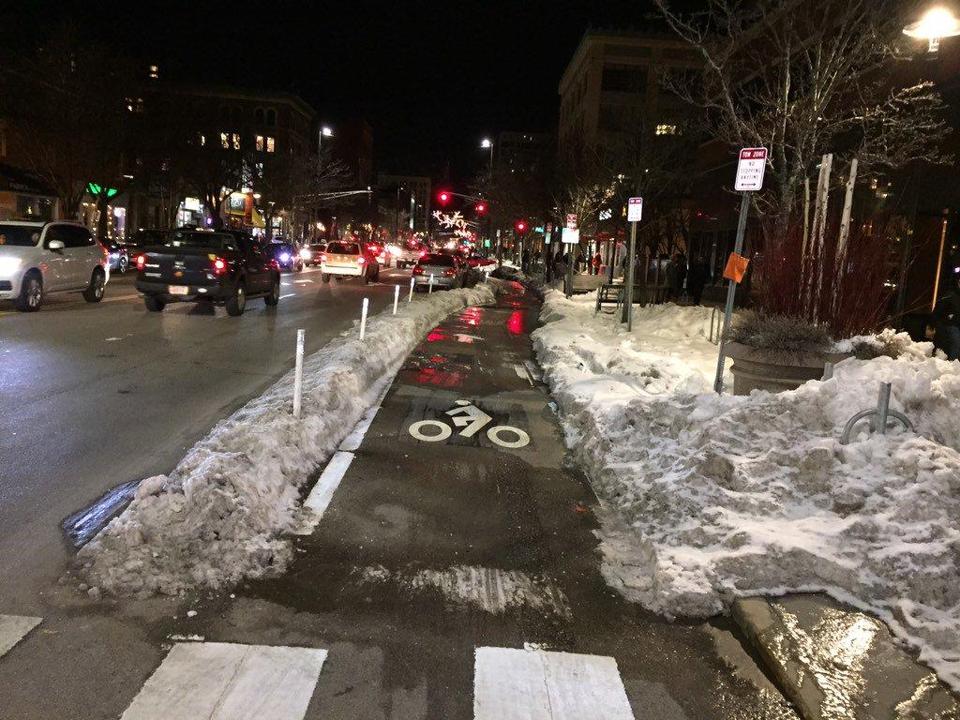
The headline of the Boston Globe article with this picture is “Snowbank becomes accidental hero for area cyclists”.
The shiny area in the bikeway is meltwater from said snowbank. When the temperature drops below freezing, the meltwater becomes a sheet of black ice. This problem is unavoidable with a street-level barrier-separated bikeway. I discussed it at length years ago in connection with the 9th Avenue bikeway in Manhattan, a bikeway which, on the other hand, I have some nice things to say about.
Neither Steve Annear, author of the article, nor anyone quoted in it, makes any mention of the black ice problem.
From the article: “’I like this snowbank-protected cycle track,’ Ari Ofsevit, a local cyclist, said on Twitter.” Ari ranges widely, imaginatively and thoughtfully in discussing transportation improvements his blog. I usually agree with him, but not in this case.
The article cites Joe Barr, of the City of Cambridge:
Barr acknowledged that the snow mound separating the bike lane and the road has offered a sense of protection to cyclists, but he said it could also be masking damage to the base of the flexible posts.
“We won’t know that until we get some more melting. But it certainly looks good on the street,” he said.
And Richard Fries, Executive Director of Massbike, commented: “It’s great. It won’t last that much longer, but it does help to hammer into people’s heads [road] patterns and driving habits,” he said. “Because it’s there, it makes the existing bike lane more visible to drivers and more prominent.”
Segregation promotes a sense of entitlement on the part of the majority group — in this case, motorists. How do I explain to horn-honking motorists that I have to ride in “their” travel lane, now narrowed to make room for the barrier, to avoid crashing on a sheet of black ice?
Or for that matter, to progress at my usual 15 miles per hour so I’m not stuck behind a cluster of bicyclists who are traveling at 8 miles per hour?
Or to avoid being right-hooked and crushed under the back wheels by a right-turning truck at Douglass Street?
Or that the rear-end collisions that this installation protects against are vanishingly rare on urban streets?
Or that parallel Harvard Street, Green Street and Franklin Street would serve admirably as low-stress through bicycle routes, if the city made the right kind of improvements?

Leave a Reply
You must be logged in to post a comment.